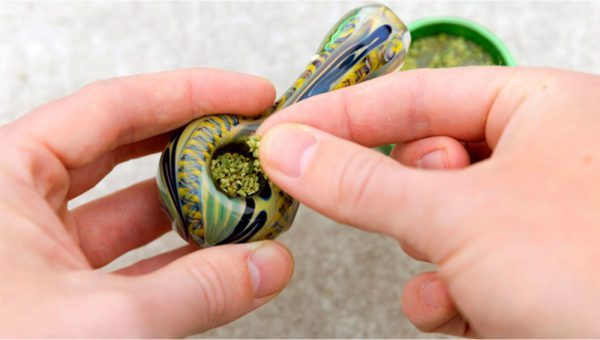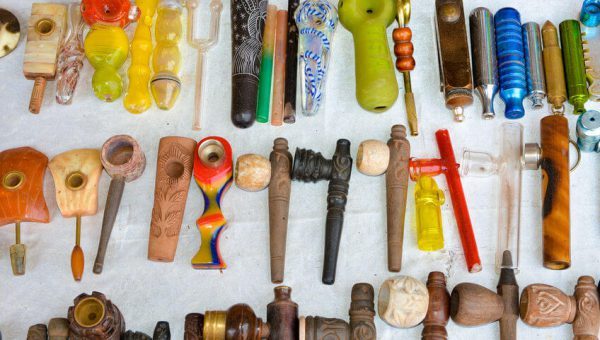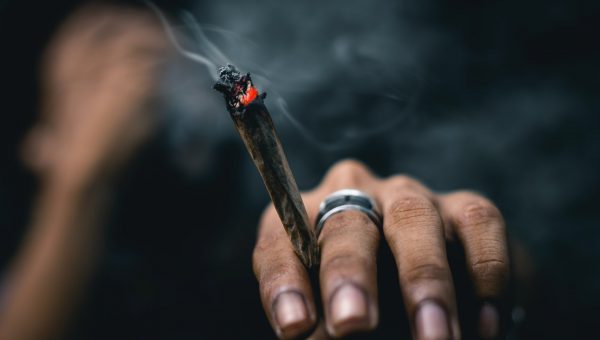Certain chemicals in cannabis, such as THC and CBD, are activated through decarboxylation. Cannabis smoking automatically triggers the “decarbing” process, but it must be performed on purpose when producing an edible or topical cannabis product. Skip this step, and you’ll end up with a weak product that won’t do much good.
Do you want to learn how to make your own cannabis-infused edibles, oils, or topical salves? If so, decarboxylated weed is a very easy and efficient place to start. This article will quickly explain what decarboxylation of cannabis is and why it is important. Next, we’ll go into the process of activating flowers and concentrates by heating them in an oven.
What is decarboxylation?
Decarboxylation is a process that activates the psychoactive chemical compounds in cannabis, causing you to feel high when you consume it. Specifically, it converts THCA, which in its original form is inactive and non-intoxicating, into its active counterpart, the psychotropic THC. You see, THCA can’t bind to the human brain’s receptors to create a euphoric high because of its extra molecular carboxyl ring. When heated, the additional carboxyl ring is removed from its structure, making the compound immediately bioavailable.
Why is decarbing important?
Cannabinoids, in their unprocessed or non-decarboxylated states, are commonly referred to as acids. Examples include THCA and CBDA, the acidic precursors to the well-known compounds THC and CBD. The psychoactive influence or “high” experienced from using raw cannabis is negligible at best. It is only after being decarboxylated that cannabis flowers and products acquire their intoxicating qualities.
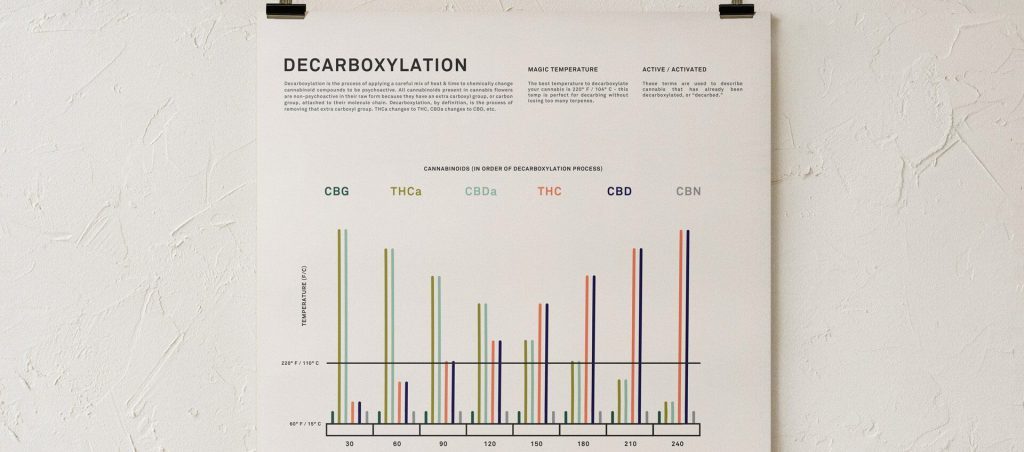
This is crucial for people who want to feel the psychoactive effects of weed in whatever form they prefer. But the advantages go much beyond a simple “high.” Studies have shown that THC and CBD have potent therapeutic effects, such as easing stress, discomfort, and inflammation. As the body easily absorbs both active cannabinoids, they can freely interact with the endocannabinoid system, producing sought-after health benefits in the process.
That being said, the raw acids THCA and CBDA also have potentially useful medical applications, albeit ones less explored and studied. In light of this, cannabis enthusiasts making weed-infused products at home are encouraged to combine raw and decarbed cannabis for an ultra-healing experience.
When is decarbing necessary?
All forms of cannabis require decarboxylation to produce an intoxicating effect. It happens when a cannabis flower or product is heated, such as when one smokes a joint or hits a vape pen. On the other hand, edibles require decarboxylation prior to consumption to activate the plant’s coveted chemical compounds.
Typically, cannabis buds are decarboxylated in an oven before being infused into carrier oil like butter, coconut oil, or olive oil. This infusion can be utilized in various ways, including food preparation, salve-making, and more.
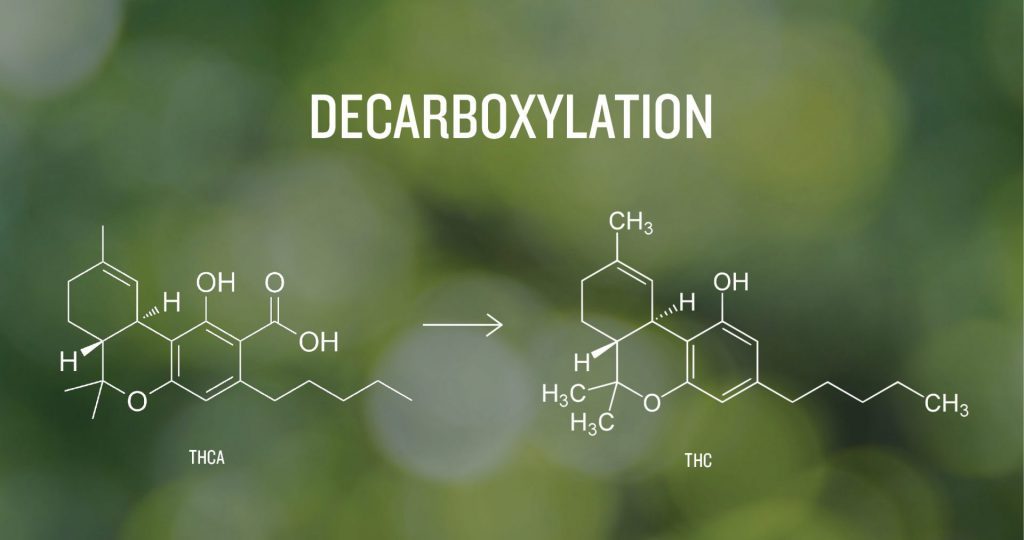
How to decarboxylate your weed?
Because it calls for no special equipment, decarbing may be done in just about any kitchen. You can decarboxylate using an oven, toaster oven, or sous vide. You can also purchase a decarboxylator, also known as an herbal infuser, for less effort and odor-free decarbing.
Bear in mind that the oven’s temperature dial is more of a guideline than a precise measurement, so keep an eye on the cannabis because oven temperatures might vary by 20 degrees. If the cannabis is browning too rapidly or smells like it’s burning, reduce the oven temperature. If you’re going to cook with weed regularly, you should also get an oven thermometer.
Read on to find out what you’ll need to decarb your precious weed and the detailed instructions for how to get it done.
Decarbing flowers
Materials:
- Oven
- Baking sheet
- Parchment paper or aluminum foil
- Cannabis
- Cannabis grinder (optional)
Instructions:
- Preheat your oven to 200°F (110°C).
- Grind your cannabis flowers into a fine, even consistency using a grinder or food processor.
- Spread the ground cannabis evenly on a baking sheet lined with parchment paper.
- Place the baking sheet in the preheated oven and bake for 30-40 minutes, stirring every 10 minutes to ensure that the cannabis is heating evenly. As ovens are hotter at the top and cooler at the bottom, also make sure to put the oven rack in the middle for the ideal decarboxylation temperature.
- Remove the baking sheet from the oven and allow the cannabis to cool completely.
- Once the cannabis is cool, it is ready to be used in your recipe or stored for later use.
Decarbing concentrates
Materials:
- Oven
- Oven Silicone mat or wax paper
- Oven safe dish
- Aluminum foil
- Preferred concentrate
Instructions:
- Preheat the oven to 220°F (104°C).
- Put the silicone mat or parchment paper on a baking sheet.
- Evenly spread the concentrate on the silicone baking mat or parchment paper. Please be careful when doing this, as the concentrate will expand, which could cause the wax to leak off the mat or paper.
- Cover with aluminum foil and bake for 20 minutes in the oven.
- After 20 minutes, turn the oven off and leave the concentrate until it is completely cool or has reached room temperature.
- After the concentrate has cooled, put it in the freezer for ten minutes. This will make removing the concentrates from the silicone mat much easier. The concentrate is then completely decarboxylated and prepared for consumption or use in recipes.
What’s the right temperature to properly decarb my weed?
Different cannabinoids and terpenes have a preferred temperature range. Depending on the temperature, it may activate, change, or burn off some of these chemical compounds. For this reason, it’s crucial to stick to the recommended temperatures—230-250°F for THC and no higher than 230°F for CBD— and to decarboxylate cannabis low and slow.
Have more questions? FAQs
What happens if you forget to decarb your weed?
If you neglect to decarb the cannabis flower or concentrate before cooking with it, the heat applied when cooking may still bring out some effects. However, it may not be as psychoactive and effective at providing potential therapeutic benefits, such as pain relief or relaxation. On the other hand,
taking weed without having exposed it to any heat will have no effects, as the THCA and CBDA will not have had the opportunity to convert into the active chemical compounds THC and CBD.
Can I decarb weed in my microwave?
It is possible to decarb cannabis in a microwave, but it is not recommended. It can cause the weed to heat unevenly, leading to a less effective decarb or potentially burning it. Also, microwaves can cause the THC to break down into CBN, a less potent cannabinoid. It is much better to use an oven or a dedicated decarboxylator for the best results.
What happens if you decarboxylate for too long?
If you decarboxylate marijuana for too long, it can cause the THC to break down into CBN, which is a less potent cannabinoid. Additionally, overheating marijuana can cause it to lose some of its potency and flavor. It is important to carefully follow the instructions for decarboxylation and avoid overheating the weed to preserve its potency and effects.
Should I always grind the flowers before decarbing?
Yes, it is generally recommended to grind cannabis flowers before decarboxylation. This is because grinding the weed into smaller pieces allows for more even heating during the decarb process, which can help activate the psychoactive compounds more effectively. Additionally, grinding the weed can make it easier to measure the desired amount and mix it into recipes. It is important to grind the weed finely, but not too finely, to get the best results.
Will decarboxylating make your house smell like weed?
Decarboxylating marijuana can produce a strong odor that can be noticeable in your home. This is because decarbing weed involves heating it, which can cause the marijuana’s distinctive smell to become more potent and noticeable. To reduce the smell, you can try decarbing the weed outdoors or in a well-ventilated area, such as a kitchen with open windows. You can also use a fan or air purifier to help remove the odor from your home. Additionally, you can try using a dedicated decarboxylator, which is a device designed specifically for decarbing marijuana and is designed to minimize odor.
How long can you store decarbed weed?
Once marijuana has been decarboxylated, it can be stored for several months to a year if it is properly stored. To preserve the potency and freshness of the weed, it is important to store it in an airtight container in a cool, dark place. Avoid exposing the weed to light, heat, or moisture, as these can cause it to lose potency over time. It is also a good idea to store the weed in a smaller container rather than a large one to minimize the amount of air that comes into contact with it. By following these tips, you can store decarbed weed for several months to a year without losing too much potency.
How potent will the final product be?
The potency of the final product after decarboxylating weed will depend on several factors, including the potency of the starting material, the length of time it is heated, and the temperature at which it is heated. In general, decarboxylation will activate the psychoactive compounds in marijuana, such as THC and CBD, and make them more potent. However, the exact potency of the final product will vary depending on the specific conditions of the decarb process. It is important to carefully follow the instructions for decarboxylation to maximize the potency of the final product.
Is there an easier way to decarboxylate?
Decarboxylation is a simple process, but it requires time and attention. To make the process easier, you can try using a dedicated decarboxylator, a device specifically designed for decarbing marijuana. These devices are designed to make the decarb process quick and easy, and they can help to ensure that the marijuana is heated evenly and consistently. Some decarboxylators even allow you to set the desired temperature and time, so you can set it and forget it. Using a decarboxylator can be a convenient and easy way to decarb your weed.
Now, you’re ready to decarb!
You may now decarboxylate cannabis with confidence, allowing you to make oil infusions, edibles, and other recipes that require decarbed weed. When using homemade cannabis-infused products, please tread cautiously, as it’s difficult to know exactly how potent they are. For this reason, we recommend starting with a very low dose (a “micro-dose”) until you become accustomed to the effects and learn how much you need to reach the desired result.
